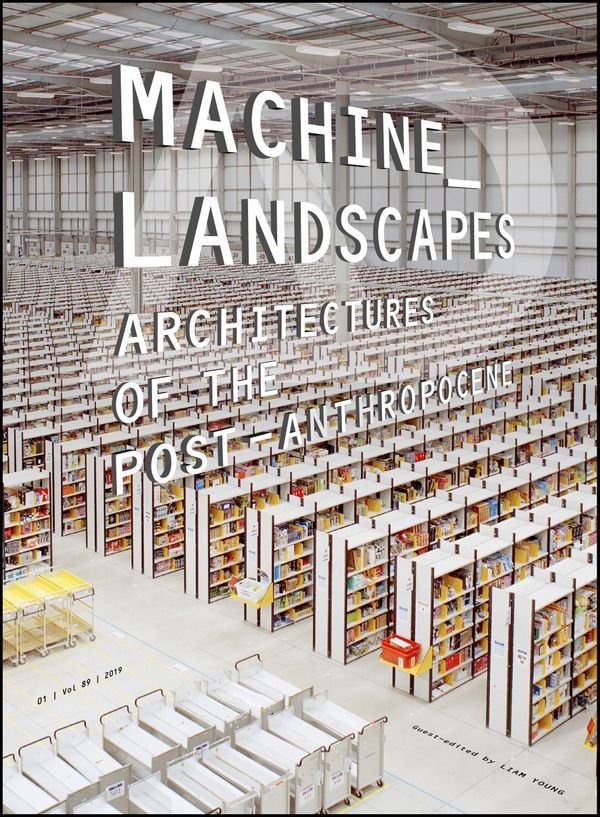Feral Atlas: The More-Than-Human Anthropocene (2020)
Filed under online resource | Tags: · animal, anthropocene, art, ecology, environment, human, infrastructure

“Feral Atlas invites you to explore the ecological worlds created when nonhuman entities become tangled up with human infrastructure projects. Seventy-nine field reports from scientists, humanists, and artists show you how to recognize “feral” ecologies, that is, ecologies that have been encouraged by human-built infrastructures, but which have developed and spread beyond human control. These infrastructural effects, Feral Atlas argues, are the Anthropocene.
Playful, political, and insistently attuned to more-than-human histories, Feral Atlas does more than catalog sites of imperial and industrial ruin. Stretching conventional notions of maps and mapping, it draws on the relational potential of the digital to offer new ways of analyzing—and apprehending—the Anthropocene; while acknowledging danger, it demonstrates how in situ observation and transdisciplinary collaboration can cultivate vital forms of recognition and response to the urgent environmental challenges of our times.”
Curated and Edited by Anna L. Tsing, Jennifer Deger, Alder Keleman Saxena and Feifei Zhou
Publisher Stanford University Press, 2020
ISBN 9781503615045, 1503615049
Cymene Howe, Anand Pandian (eds.): Anthropocene Unseen: A Lexicon (2020)
Filed under book | Tags: · anthropocene, climate, climate crisis, earth, environment, theory
![]()
“The idea of the Anthropocene often generates an overwhelming sense of abjection or apathy. It occupies the imagination as a set of circumstances that counterpose individual human actors against ungraspable scales and impossible odds. There is much at stake in how we understand the implications of this planetary imagination, and how to plot paths from this present to other less troubling futures. With Anthropocene Unseen: A Lexicon, the editors aim at a resource helpful for this task: a catalog of ways to pluralize and radicalize our picture of the Anthropocene, to make it speak more effectively to a wider range of contemporary human societies and circumstances. Organized as a lexicon for troubled times, each entry in this book recognizes the gravity of the global forecasts that invest the present with its widespread air of crisis, urgency, and apocalyptic possibility. Each also finds value in smaller scales of analysis, capturing the magnitude of an epoch in the unique resonances afforded by a single word.
The Holocene may have been the age in which we learned our letters, but we are faced now with circumstances that demand more experimental plasticity. Alternative ways of perceiving a moment can bring a halt to habitual action, opening a space for slantwise movements through the shock of the unexpected. Each small essay in this lexicon is meant to do just this, drawing from anthropology, literary studies, artistic practice, and other humanistic endeavors to open up the range of possible action by contributing some other concrete way of seeing the present. Each entry proposes a different way of conceiving this Earth from some grounded place, always in a manner that aims to provoke a different imagination of the Anthropocene as a whole.
The Anthropocene is a world-engulfing concept, drawing every thing and being imaginable into its purview, both in terms of geographic scale and temporal duration. Pronouncing an epoch in our own name may seem the ultimate act of apex species self-aggrandizement, a picture of the world as dominated by ourselves. Can we learn new ways of being in the face of this challenge, approaching the transmogrification of the ecosphere in a spirit of experimentation rather than catastrophic risk and existential dismay? This lexicon is meant as a site to imagine and explore what human beings can do differently with this time, and with its sense of peril.”
Publisher Punctum Books, February 2020
Creative Commons BY-NC-SA 4.0 International License
ISBN 9781950192557
540 pages
PDF, PDF (218 MB)
Earlier online edition (2016-2017)
Architectural Design, 89(1): Machine Landscapes: Architectures of the Post‐Anthropocene (2019)
Filed under magazine | Tags: · anthropocene, architecture, data center, design, infrastructure, machine, media infrastructure

“This issue of Architectural Design (AD) discusses how the most significant architectural spaces in the world are now entirely empty of people. The data centers, telecommunications networks, distribution warehouses, unmanned ports, and industrialized agriculture that define the very nature of who we are today are at the same time places we can never visit. Instead, they are occupied by server stacks and hard drives, logistics bots and mobile shelving units, autonomous cranes and container ships, robot vacuum cleaners and internet-connected toasters, driverless tractors and taxis.
This issue is an atlas of sites, architectures, and infrastructures that are not built for us, but whose form, materiality, and purpose are configured to anticipate the patterns of machine vision and habitation rather than our own. We are said to be living in a new geological epoch, the Anthropocene, in which humans are the dominant force shaping the planet. This collection of spaces, however, more accurately constitutes an era of the Post-Anthropocene, a period where technology and artificial intelligence now compute, condition, and construct our world. Marking the end of human-centred design, the issue turns its attention to the new typologies of the post-human, architecture without people, and our endless expanse of Machine Landscapes.”
Contributors: Liam Young, Benjamin H. Bratton, Trevor Paglen, Adam Harvey, Jenny Odell, Geoff Manaugh, Ben Roberts, Jesse LeCavalier, John Gerrard, Rem Koolhaas, Ingrid Burrington, Xingzhe Liu, Merve Bedir, Jason Hilgefort, Simone C. Niquille, Tim Maughan, Clare Lyster, Alice Gorman, Ian Cheng, Cathryn Dwyre, Chris Perry, David Salomon, and Kathy Velikov.
Edited by Liam Young
Publisher Wiley, January/February 2019
Open access
ISSN 0003-8504
ISBN 9781119453017
144 pages

